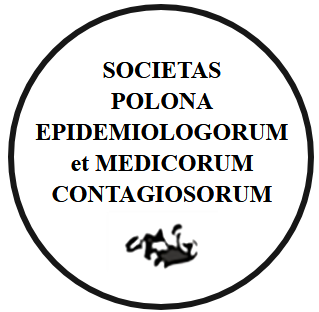RESEARCH PAPER
Infectious diseases in Poland in 2022
1
Zakład Epidemiologii Chorób Zakaźnych i Nadzoru, Narodowy Instytut Zdrowia Publicznego PZH – Państwowy Instytut Badawczy
Submission date: 2025-02-16
Final revision date: 2025-02-21
Acceptance date: 2025-02-21
Online publication date: 2025-02-25
Publication date: 2025-03-18
Corresponding author
Magdalena Rosinska
Zakład Epidemiologii Chorób Zakaźnych i Nadzoru, Narodowy Instytut Zdrowia Publicznego PZH – Państwowy Instytut Badawczy
Zakład Epidemiologii Chorób Zakaźnych i Nadzoru, Narodowy Instytut Zdrowia Publicznego PZH – Państwowy Instytut Badawczy
Przegl Epidemiol 2024;78(4):524-542
KEYWORDS
TOPICS
ABSTRACT
OBJECTIVES. We summarize the epidemiological situation of infectious diseases in 2022 in Poland, with particular attention to the potential impact of the COVID-19 pandemic and the influx of refugees from Ukraine, which occurred as a result of Russian aggression against this country.
MATERIAL AND METHODS. The evaluation uses published surveillance reports for individual diseases (Epidemiological chronicle) and data from the national register of infectious diseases Epibaza, which collects mandatory reports and information obtained during epidemiological investigations conducted by the State Sanitary Inspection. Data on mortality were obtained from Statistics Poland.
RESULTS. In 2022, 2,370,351 cases of COVID-19 and 29,026 deaths due to this disease were recorded. COVID-19 mortality in 2022 was significantly lower (by 68%) than in 2021, although COVID-19 still caused more deaths than other infectious diseases combined. In 2022, mass testing for SARS-CoV-2 was withdrawn, causing much higher incidence underestimation. For diseases such as influenza and influenza-like illnesses, chickenpox, Lyme disease, the 2022 incidence corresponded to the median for the years 2016-2020. The incidence of tick-borne encephalitis (+70.8% vs. 2016-2020 median), Clostridioides difficile infections (+93.5% vs. 2016-2020 median), norovirus infections (+62.8% vs. 2016-2020 median), invasive pneumococcal disease (+88.8% vs. 2016-2020 median), and sexually transmitted infections returned to the upward trend. In the case of HIV, diagnoses among migrants from Ukraine also contributed to the increased number of new diagnoses (+100.9%). Migrants from Ukraine accounted for the highest percentage of HIV/AIDS cases (23.9%), hepatitis B (6.2%) and C (10.6%), tuberculosis (4.6%), measles (11.1%), and rubella (4.8%). The size of the Ukrainian migrant population in Poland is estimated at 2%-3% of the general population.
CONCLUSIONS. For most diseases, there was an increase in recorded incidence compared to 2020-2021 and a return to pre-pandemic trends. The impact of the influx of refugees from Ukraine was small for most diseases.
FUNDING
The work was carried out as part of task No. BE-1/2024
Share
RELATED ARTICLE
We process personal data collected when visiting the website. The function of obtaining information about users and their behavior is carried out by voluntarily entered information in forms and saving cookies in end devices. Data, including cookies, are used to provide services, improve the user experience and to analyze the traffic in accordance with the Privacy policy. Data are also collected and processed by Google Analytics tool (more).
You can change cookies settings in your browser. Restricted use of cookies in the browser configuration may affect some functionalities of the website.
You can change cookies settings in your browser. Restricted use of cookies in the browser configuration may affect some functionalities of the website.





